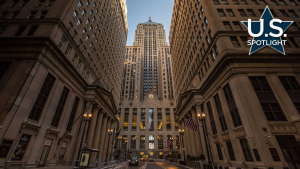The Canadian Green Building Council plans to measure energy performance after construction to help to ensure that buildings operate at optimum efficiency.
Green Building
New point system will consider operating criteria
Canada’s LEED program is poised to take a big step forward as building performance is set to play a bigger role.
Currently, a developer is awarded a LEED certificate for a building based on a 70-credit design specifications rating system. Each credit represents a certain energy performance factor or green-friendly element which is incorporated into the design.Based on the building’s design scorecard, the developer is awarded a LEED certificate in one of four categories: Platinum, Gold, Silver or a standard LEED certificate.
“It means that the building is designed to a certain level of energy consumption, water consumption and so on,” explains Thomas Mueller, president and CEO of the Canada Green Building Council (CaGBC), administrator of the LEED program.
But one of the criticisms of LEED’s evaluation system is that it doesn’t take into account a building’s actual performance. Once it is built, for example, there is no analysis of its energy performance.
“All of our tools, LEED included, are based on predicted energy performance only,” says Doug Webber, sustainability practice leader, Halsall Associates Limited, a multi-disciplinary engineering consultant. “It is not a performance-driven rating system,”
“This is not totally a criticism; it’s a sign of how young this (green) industry is,” he says. “LEED all along has been trying to balance credibility and reliability with ease of use.”
But that system has not always proven reliable and so the CaGBC is moving to incorporate a performance-driven element into the evaluation of LEED buildings.
“What is important now is that we measure the performance of the buildings in order to set standards and have design strategies and operational practices that ensure that these buildings operate at optimum efficiency,” says Mueller.
That is a “big step,” says Webber and other sustainable building design consultants.
Studies have shown that in actual performance testing of LEED buildings while the majority of LEED certified buildings got a passing grade, some did not. Moving to performance testing will ensure that all LEED buildings meet the ratings they claim to meet.
“It’s the next step in the evolution of green buildings in North America. It is a massive change on how we think about buildings and communities: moving from design performance to measured performance,” says Mueller, adding that green leaders in the U.S. are watching the CaGBC’s move closely.
Simply put, the new LEED Complete evaluation system gives developers a “first-level certification” once the design of the building is completed and assessed by LEED experts. Second level certification is based on completion of the construction of the building. After the building has operated for a year, it will be evaluated again on its performance.
“Only if the building meets its LEED target, will it get that third level of certification,” explains Mueller.
The three-level certification is called LEED Complete. It is the brainchild of key people at the CaGBC and experts in the field.
Over the next six months, LEED Complete pilot projects will start up in schools, government buildings, residential and commercial projects across Canada, says Mueller. New and existing commercial/institutional construction is expected to be fully integrated under the LEED Complete umbrella by 2009.
Mueller says developers that CaGBC has spoken with “are quite excited” about the move. It will give many of them a “marketing edge” because they can provide data to clients illustrating how well their building is performing.
“And it will demonstrate corporate responsibility with regards to climate change and other environmental issues,” Mueller adds.
Most major Canadian municipalities have adopted LEED standards, applying them to all of their new buildings. The City of Toronto, however, has developed its own green building standard, a system that parallels LEED standards.
From a study by Halsall for the City of Toronto on green standards adopted by international cities, the consultant identified a number of cities heading down the same path as Toronto and other Canadian cities. Most, however, don’t incorporate building performance evaluations. “That means most of them don’t know if their program is working or not.”
While LEED has its critics, Webber says the program works and is in synch with today’s building codes.
However, it could set higher standards on some levels, he says. For instance, LEED’s prerequisite for curbing energy consumption by 2012 is in line with the national building code. “Really what should happen is that date should be moved ahead so that maybe in 2008 or 2009 we should be at 25 per cent (reduced energy consumption) in the code and LEED could dictate a prerequisite of say 35 per cent. That is a series of leaps. We shouldn’t have one target ahead.”
LEED has also been adopted by the federal and some provincial governments. But Mueller says the program has come a long way from the days it was simply viewed as an initiative supported primarily by government. “Today close to 40 per cent of the buildings certified are from the private sector.”
Currently, while there are several developers chasing LEED Platinum certificates, only one has achieved the highest of LEED ratings: the operations centre for Gulf Islands National Park Reserve.










Recent Comments
comments for this post are closed